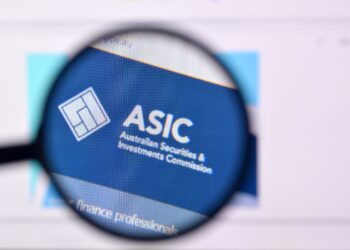Volatility in US markets means currency is becoming a critical factor in Australian investors’ ETF selection this year.
ETFs have seen strong flows this year with the first half of 2025 ending at $280 billion in ETF assets under management in Australia, gaining $21.6 billion during the six-month period.
But with US markets rocked with volatility as a result of US President Donald Trump’s tariffs and market reform, this is leading investors to be cautious with their US allocations. Since the start of 2025, the S&P 500 has gained 8 per cent, but it fell dramatically at the start of April when Trump enacted his “Liberation Day”.
In a BlackRock webinar, iShares ETF and index investments specialist at BlackRock Tamara Stats said the US remains a core part of portfolios for Australian investors, but that it is now being accessed in different ways or as a satellite approach.
For example, the firm’s S&P 500 AUD Hedged ETF has been the firm’s second-biggest gainer in Australia since the start of the year, having seen inflows of almost $500 million. On the other hand, the unhedged version of the fund gained AU$170 million from Australian investors, just less than half the flows into the hedged version.
She said: “Currency is becoming increasingly important as investors grapple with the volatile trajectory for the US dollar which is potentially less dominant than it once was.
“They are expressing their views on currency through that flows data.”
According to the latest Bank of America global fund manager survey, a third of respondents said they are looking to increase their hedges against a weaker US dollar and are most underweight to the US dollar in their asset allocation.
Earlier this month, the firm launched its first active ETF in Australia which also sits in the US equities space. This is the iShares US Factor Rotation Active ETF which offers a “lower-cost entry point” to an actively managed US equities strategy with annual fees of 0.45 per cent.
In fixed income, Stats said flows into short-duration US government bonds – its iShares 0-3 Month Treasury Bond ETF – are “quite significant” with over $50 million going into the product, while its long-duration ones have reported outflows instead.
The Core Composite Bond ETF, which has a duration of around five years, has also been popular at $280 million in inflows.
According to JP Morgan Asset Management, fixed income ETFs are expected to be an area of future growth, set to reach US$6 trillion by 2030, especially in the active space.
“One of the areas we are seeing particular interest from institutional investors is in fixed income which is traditionally an active asset class that can be difficult to access. They don’t always trade on a daily basis, so ETFs offered via the secondary market offer an extra layer of liquidity, and that’s an additional benefit. That will be an area of growth going forward,” Travis Spence, global head of ETFs said.





